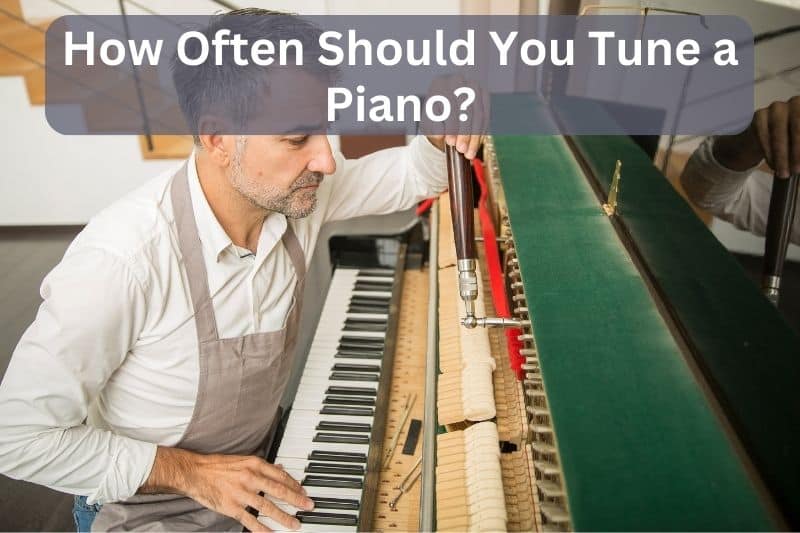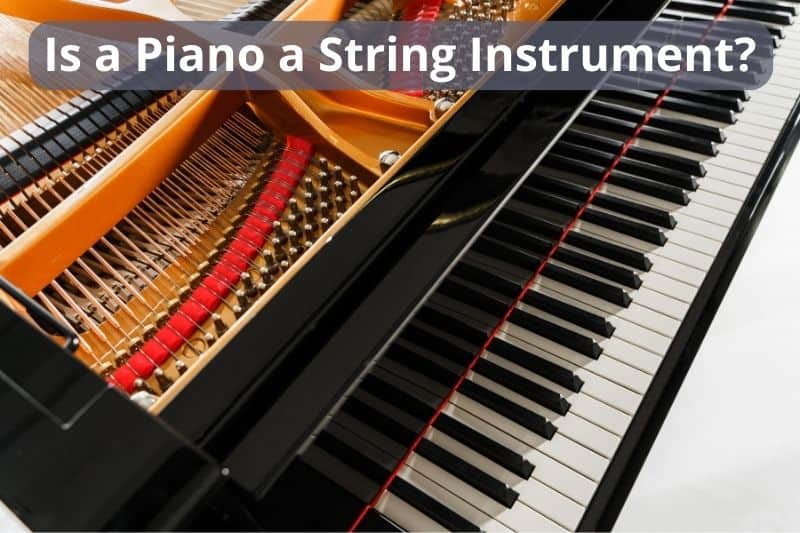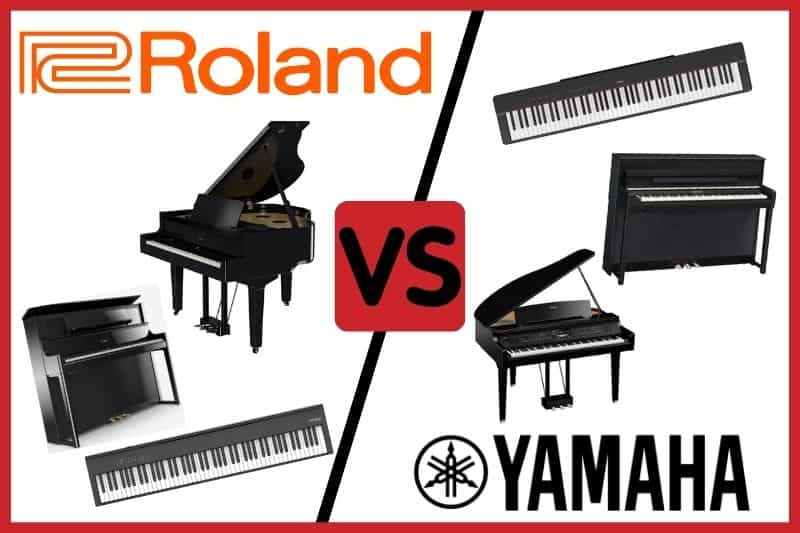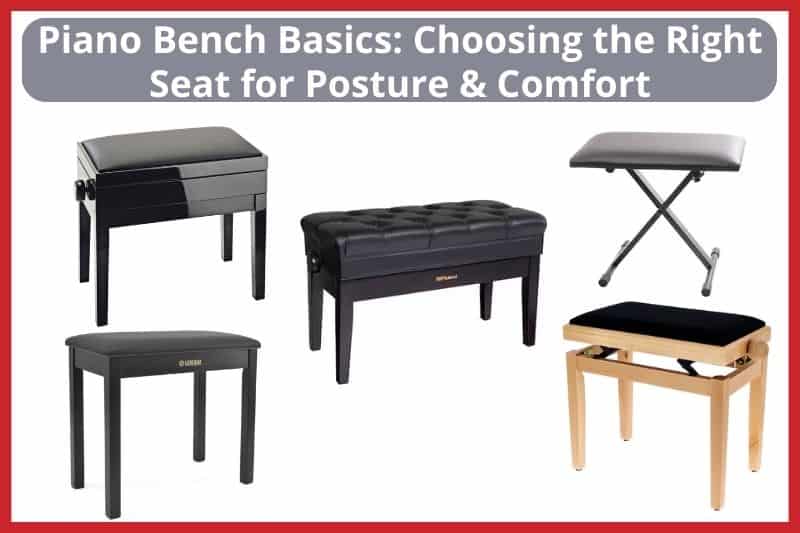When you’re in the market for a digital piano, narrowing down your choices to the most fitting brand is a crucial step. Yamaha and Kawai both offer a range of digital pianos that are renowned for their quality and performance. These distinguished brands have been at the forefront, crafting some of the finest digital instruments that cater to pianists of all skill levels.
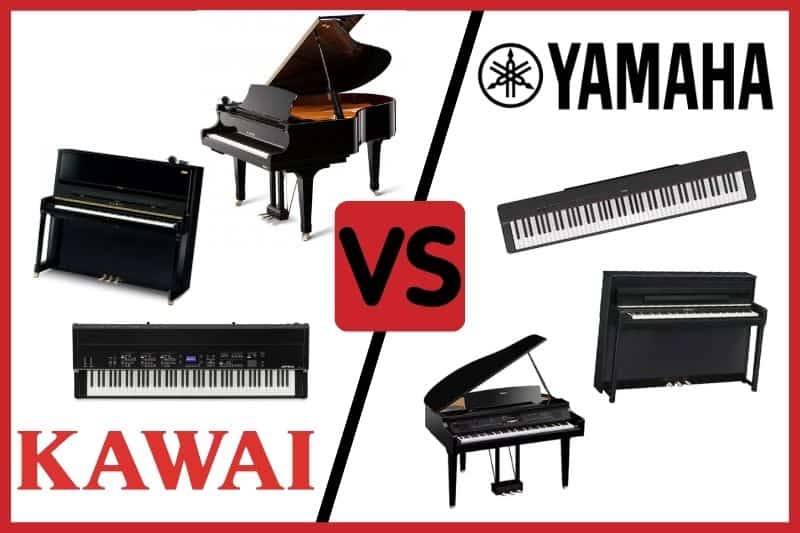
Yamaha digital pianos are known for their advanced technology and features. On the flip side, Kawai’s digital pianos are also highly regarded, especially for their authentic key action and sound quality. Between Yamaha and Kawai, your choice ultimately hinges on personal preference, as both brands present a compelling case for quality and realism in their digital pianos.
Design and Craftsmanship
You’ll notice that each brand has a distinct approach to design and craftsmanship, affecting everything from the materials used to the piano’s look and feel.
Comparing Aesthetic and Build Quality
Yamaha digital pianos are known for their clean, modern designs and use of both traditional and advanced materials. The construction often involves a blend of quality woods for aesthetic appeal and composite materials for durability and stability. This combination ensures their pianos are not just pleasing to the eye but also built to last.
Kawai, on the other hand, sticks to a philosophy that often includes the use of wood and composite materials like ABS-Carbon Fiber in their action parts. This reflects their commitment to traditional craftsmanship but also integrates modern materials to enhance the instrument’s performance and longevity.
Yamaha’s Design Philosophy
Yamaha’s digital pianos are designed to mirror the experience of playing an acoustic piano. They focus on subtle details such as matte keytops to imitate the feel of ivory and ebony, striving for an authentic touch. The graded hammer action in models like the Yamaha YDP 145 provides a graduated weight that emulates an acoustic piano’s haptic feedback.
Kawai’s Approach to Construction
Kawai emphasizes the stability and precision of their digital piano actions. With industry-leading features like the Millennium III ABS-Carbon Fiber action, Kawai marries tradition with innovation for a sturdy and responsive playing experience. Their design choice leans towards a more organic tone production, often described as warmer compared to Yamaha’s typically brighter sound.
Digital Piano Technology
Sound Engines and Acoustic Projections
Yamaha’s Pure CF Sound Engine is renowned for faithfully reproducing the tone of the company’s acclaimed CFIIIS concert grand piano. It allows for dynamic and expressive playing, ensuring that rich tones are maintained across all volume levels. In contrast, Kawai might leverage its own sound technology, like the Harmonic Imaging™, to create deep, rich sounds that mirror their grand pianos. Both brands incorporate advanced technology to emulate the acoustic properties and nuances of real piano sounds.
Key Action Mechanisms
The key action is vital as it influences the touch and response of the digital piano. Yamaha typically equips their digital pianos with a Graded Hammer Standard (GHS) keyboard, which mimics the hammer action of acoustic pianos. Kawai often features the Responsive Hammer action, which gives you a realistic piano feel, emphasizing the resistance and weight of genuine piano keys.
Innovative Features and Connectivity
Both Yamaha and Kawai invest in innovative features to augment your playing experience. You might find options like MIDI capability for easy recording and composition. For wireless convenience, Bluetooth audio could be a part of your digital piano, allowing you to connect with various devices and apps. Advanced features could include apps that help with learning, recording software, or even proprietary learning suites that expand what you can do with your digital piano.
Tone and Sound Quality
Yamaha’s Tone Characteristics
Yamaha digital pianos are known for their brighter tones. This quality ensures that higher frequencies are full of warmth, making them stand out during play. In terms of technical specifications, Yamaha typically boasts impressive polyphony numbers, allowing you to play complex pieces without note dropouts. The speakers in Yamaha pianos are designed to deliver this bright, clear sound efficiently across various volumes.
Kawai’s Sound Signatures
Kawai digital pianos, on the other hand, offer a sound that some describe as more organic. They tend to produce a flatter tone that closely mimics the sound of an acoustic piano. Kawai’s key action provides a realistic feel, which in turn affects the tonal dynamics, providing you with a responsive playing experience. The company also integrates advanced speaker systems that enhance the naturalism of the piano’s sound.
Performance and Playability
Weighted Keys and Touch Sensitivity
Yamaha digital pianos often feature the Graded Hammer Standard (GHS) action, which means your experience will mimic the tactile response of a traditional acoustic piano. The keys are heavier in the lower octaves and lighter in the higher ones, providing a natural playing feel. This is pivotal for you if you’re looking for an authentic touch.
Kawai, on the other hand, employs Responsive Hammer Compact (RHC) action in their entry-level models. This technology replicates the feel of a grand piano by using different weights across the keyboard, ensuring that you get a realistic touch.
Responsive Actions for Experienced Pianists
Experienced pianists usually seek out a digital piano that can translate their technique into precise sound. The touch of the keys needs to be highly responsive to allow for dynamic playing. Kawai’s higher-end digital pianos utilize advanced key action mechanisms such as the Grand Feel and Responsive Hammer III actions which offer a level of resistance and key return that closely mirrors an acoustic piano, favoring expressive performance.
Yamaha’s GH (Graded Hammer) and GH3 (Graded Hammer 3) actions feature in their mid-range to premium digital pianos. These actions are designed to provide a heavier touch in the low end and lighter in the high end, akin to an acoustic piano, giving you a sensitive response to your playing intensity.
Entry-Level Considerations for Beginners
If you’re just starting out, you’ll want an instrument that aids in the development of your technique. Yamaha’s entry-level digital pianos with the GHS action are robust and provide an even and consistent feel throughout the keyboard, which is ideal for building finger strength and technique.
Kawai’s entry-level digital pianos with the RHC action are also designed to give you the weighted key experience without overwhelming a beginner with too much complexity. It’s also less costly, making it a practical choice if you’re not ready to invest in a higher-end model just yet. Practicing with either brand’s entry-level digital pianos can smoothly transition you to more professional playing.
Accessories and Expansion
When choosing a digital piano, the ability to play privately and capture your performances is key. Yamaha and Kawai offer different options for headphone use and recording functionalities, so you’ll want to consider these features carefully.
Headphones and Privacy Play
Both Yamaha and Kawai digital pianos typically feature built-in headphone jacks, allowing you to connect your headphones directly for private practice sessions. This is especially useful for:
- Late-night practice without disturbing others
- Focused sessions where external noise is minimized
With headphones, you can fully immerse yourself in the nuanced sound quality that these pianos offer.
MIDI and Recording Functionalities
Regarding MIDI connectivity and recording capabilities, you’ll find:
- MIDI Connectivity:
-
- Both brands often include MIDI in and out ports.
- This allows you to connect your digital piano to other MIDI-capable devices or to a computer for a range of music production activities.
- Recording Capabilities:
-
- Yamaha and Kawai pianos may come with built-in recording features.
- You can usually record and playback your pieces, which is essential for self-evaluation and progress tracking.
Practicalities for Learning and Lessons
As a student or an educator, the digital piano you pick should enhance the learning experience. Kawai’s Responsive Hammer action and Yamaha’s Graded Hammer Standard (GHS) keyboard both mimic the touch of an acoustic piano, which is essential for developing proper technique during lessons. Yet, if you’re a beginner, Yamaha often presents a user-friendly interface with its instruments, ideal for navigating through your initial lessons.
Professional Usage and Artist Preferences
For gigging artists, the portability of a digital piano is crucial. Yamaha’s models, such as the P-series, are known for being more lightweight and often preferred by musicians on the move. In contrast, Kawai’s instruments focus heavily on the authenticity of the piano touch and sound, catering to the needs of artists who prioritize performance quality. Both brands provide a range of sounds and features that can cater to professional settings—from recording studios to live concert venues.
Pricing and Value
Kawai and Yamaha offer options that can match various price points, ensuring you find an instrument that’s not only affordable but also a worthy investment.
Budget-Friendly Options
Kawai and Yamaha both feature pianos that cater to those without the luxury of a large budget. Kawai’s entry-level digital pianos offer nuanced touch and sound at a cost that won’t break the bank. Similarly, Yamaha’s P-series, particularly the P125a, boasts essential features at a price that’s gentle on your wallet. These models provide solid performance for beginners or those needing a more portable option without a hefty price tag.
Making the Most of Your Investment
Both brands have digital pianos in the mid-range that strike a balance between cost and quality. For example, as you step up in price, you’ll encounter improved key action, richer sound quality, and sturdier builds. Yamaha’s YDP series adds a Graded Hammer Standard (GHS) keyboard that simulates the action of an acoustic piano, enhancing the playing experience without a significant jump in price.
High-End Choices for Professionals
For the serious pianist or professional, both Kawai and Yamaha offer high-end digital pianos with advanced features. You’ll find models with everything from state-of-the-art sound engines to multi-channel sampling. Yamaha’s Clavinova series and Kawai’s CA series are renowned in this space, offering the expressiveness and responsiveness that rivals traditional grand pianos, reflected in their premium pricing. These investments deliver long-term value for those requiring the best touch, tone, and technology available.
Head to Head Summary: Yamaha vs. Kawai
Yamaha and Kawai digital pianos often contest for the top spot in many pianists’ preferences. Here’s how they fare in a side-by-side comparison:
Sound Quality:
- Yamaha: Known for bright, sharp tones consistent with their acoustic pianos.
- Kawai: Offers a warmer and more natural sound, closer to a traditional piano.
Key Action:
- Yamaha: Equipped with the Graded Hammer Standard for a realistic feel.
- Kawai: Features the Responsive Hammer action, mimicking the tactile feel of acoustic piano keys.
Technology:
- Yamaha: Incorporates Smart Pianist App for intuitive control.
- Kawai: Uses Harmonic Imaging technology to create detailed and rich piano sounds.
Durability and Design:
- Both brands offer well-built instruments with sleek designs, though Yamaha might have an edge in worldwide brand recognition.
Final Thoughts on Selection and Preference
When it’s time to choose between a Yamaha or Kawai digital piano, remember it’s not just about the best digital piano, but what suits your taste and needs. Consider the subtleties of sound and touch, as personal preference plays a significant role:
- If you prefer a brighter tone and a wide range of features, a Yamaha might align with your style.
- However, if you’re seeking the warmth and responsive key action that emulates the feel of an acoustic piano, Kawai could be your choice.
In the end, you should play both and see which connects with your personal taste and playing style.
